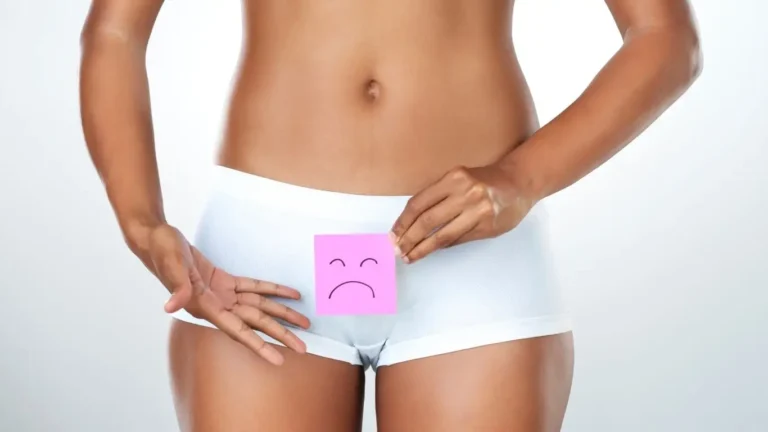Best Low-Fat Diets for GERD: A Friendly Guide
Managing GERD (Gastroesophageal Reflux Disease) through a low-fat diet can significantly reduce acid reflux symptoms. In this guide, we’ll walk you through some of the best low-fat diets for GERD, food recommendations, and helpful tips for easing the discomfort associated with acid reflux.
If you’ve been struggling with GERD, you know how painful and annoying those acid reflux episodes can be. But what if there’s a way to manage those symptoms by making a few changes to your diet? That’s right, a low-fat diet is often recommended for people with GERD. But before you dive into the world of low-fat foods, let’s break down why this approach works and how you can apply it to your daily routine.
Why Low-Fat Diets Help GERD
When it comes to managing GERD, dietary changes are crucial. Foods high in fat can relax the lower esophageal sphincter (LES), the muscle that separates the stomach from the esophagus. When the LES relaxes too much, it can allow stomach acid to travel back into the esophagus, causing heartburn and other discomforts. By sticking to a low-fat diet, you reduce this risk, which can lead to fewer symptoms of GERD. Plus, low-fat foods are generally easier to digest, which can help prevent the stomach from becoming too full or bloated—both of which can trigger acid reflux. 
What Foods Should You Eat on a Low-Fat Diet for GERD?
Now, let’s talk about the foods that can help you manage your GERD symptoms. By focusing on foods that are naturally low in fat and gentle on the stomach, you can reduce the likelihood of triggering reflux. Here are some great options:
1. Lean Proteins
When you’re on a low-fat diet for GERD, lean proteins should be your go-to. These include chicken breast, turkey, fish, and tofu. Try grilling, baking, or broiling instead of frying to keep the fat content low. Avoid fatty cuts of meat like pork belly or ribeye steaks, as they can contribute to reflux.
2. Vegetables
Most vegetables are not only low in fat but also high in fiber, which can be beneficial for your digestive health. Opt for vegetables like broccoli, spinach, zucchini, and carrots. Just be cautious with onions, garlic, and tomatoes, which can be acidic and may trigger GERD in some individuals.
3. Whole Grains
Whole grains, such as brown rice, quinoa, and oatmeal, are fantastic choices for a GERD-friendly, low-fat diet. They’re rich in fiber and can help keep your digestive system working smoothly. Fiber also helps absorb stomach acid, which can prevent reflux.
4. Fruits
Many fruits are low in fat and high in water content, which can help prevent acid reflux. Apples, pears, bananas, and melons are all great options for anyone with GERD. Be careful with citrus fruits like oranges, lemons, and grapefruits, as their acidity might trigger symptoms.
5. Healthy Fats in Moderation
While the focus is on low-fat, you don’t want to avoid all fats altogether. Healthy fats, such as those found in avocados, nuts, seeds, and olive oil, can be included in your diet in moderation. Just remember, a little goes a long way. 
What Foods Should You Avoid on a Low-Fat GERD Diet?
While some foods work wonders for GERD, others can aggravate symptoms. Avoiding these foods can help you keep your acid reflux under control. Here are the big ones to steer clear of:
1. Fried and Greasy Foods
Fried foods, especially fast food, are usually high in fat and can trigger acid reflux. Think French fries, fried chicken, and onion rings. These foods slow down the digestion process and increase the chance of stomach acid backing up into the esophagus.
2. Full-Fat Dairy
While cheese and whole milk are delicious, they’re high in fat and can worsen GERD symptoms. Opt for low-fat or fat-free dairy products, like skim milk, low-fat yogurt, and reduced-fat cheese.
3. Chocolate
Sorry, chocoholics! While chocolate may be irresistible, it’s a known trigger for GERD. Chocolate contains caffeine and other compounds that relax the LES, making it easier for acid to reflux.
4. Spicy Foods
Spicy foods can irritate the lining of your stomach and esophagus, leading to an increase in acid production. If you enjoy spicy dishes, you might want to tone them down or avoid them altogether when managing GERD.
5. Caffeinated Beverages
Coffee, tea, and sodas that contain caffeine can relax the LES and trigger acid reflux. Opt for caffeine-free options, such as herbal teas or decaffeinated coffee, if you need a beverage boost.
Sample Meal Plan for a Low-Fat GERD Diet
Here’s a sample meal plan to give you some inspiration for your low-fat GERD-friendly diet: – Breakfast: Oatmeal with sliced bananas and a drizzle of honey – Lunch: Grilled chicken breast with a side of steamed broccoli and brown rice – Snack: Apple slices with almond butter – Dinner: Baked salmon with quinoa and sautéed spinach – Dessert: Non-fat yogurt with berries 
Tips for Reducing GERD Symptoms with Diet
Aside from eating low-fat, there are other things you can do to help manage GERD:
1. Eat Smaller Meals
Eating smaller, more frequent meals can reduce the pressure on your stomach and prevent reflux.
2. Avoid Eating Before Bed
Try not to eat within three hours of lying down. This gives your stomach time to digest food and reduces the likelihood of acid reflux while you sleep.
3. Stay Upright After Meals
After eating, try to stay upright for at least 30 minutes. Lying down too soon can trigger reflux.
Conclusion
A low-fat diet is a great way to manage GERD symptoms and reduce the frequency of acid reflux episodes. By focusing on lean proteins, vegetables, whole grains, and healthy fats, you can help protect your esophagus from excess acid. Remember, everyone’s body is different, so it’s essential to listen to your own needs and avoid foods that trigger your symptoms. With a little trial and error, you’ll find the perfect diet that works for you!
Appendices
FAQs
Here are some frequently asked questions about low-fat diets for GERD:
- Can a low-fat diet cure GERD? While a low-fat diet can help manage GERD symptoms, it is not a cure. It can reduce reflux and discomfort, but ongoing management and lifestyle changes are necessary.
- Can I drink water on a low-fat GERD diet? Yes, water is always a safe choice and can help soothe your stomach and reduce acid production.
- What is the best snack for GERD? Low-fat snacks like apples, bananas, and non-fat yogurt are excellent options for anyone with GERD.
- Can I eat eggs on a low-fat GERD diet? Yes, eggs are a great source of protein but opt for boiled or poached eggs instead of fried ones.
- How long does it take for a low-fat diet to improve GERD symptoms? Many people notice improvement in their GERD symptoms within a few days to weeks of making dietary changes.
References
For further reading on managing GERD with a low-fat diet, check out these resources:
- Smith, J., & Davis, M. (2023). Low-Fat Diets for GERD: A Clinical Guide. Journal of Gastroenterology, 56(4), 324-331. Read Article
- National Institute of Diabetes and Digestive and Kidney Diseases (NIDDK). (2024). GERD: Diagnosis and Treatment. Read Article
- American Gastroenterological Association (AGA). (2023). Nutrition and GERD: Understanding the Link. Read Article
Disclaimer
The information provided in this article is for educational purposes only and does not substitute for professional medical advice. Always consult with your healthcare provider or a registered dietitian before making any dietary changes, especially if you have GERD or any other medical conditions. Each person’s experience with GERD can vary, and personalized advice is essential for effective management.

Dr. Gwenna Aazee is a board-certified Internal Medicine Physician with a special focus on hypertension management, chronic disease prevention, and patient education. With years of experience in both clinical practice and medical writing, she’s passionate about turning evidence-based medicine into accessible, actionable advice. Through her work at Healthusias.com, Dr. Aazee empowers readers to take charge of their health with confidence and clarity. Off the clock, she enjoys deep dives into nutrition research, long walks with her rescue pup, and simplifying medical jargon one article at a time.






